20 practical tips to help an anxious cat
Help your cat grow in confidence with these simple and effective tips

Want to know how to help an anxious cat? You've come to the right place. Just like us humans, every one of our feline friends is unique, so while some will be bold and outgoing, others will be more nervous and slower to warm up.
Anxiety in cats is more common than you might think, and it can manifest in all sorts of different ways. Some cats may eat very little, others may hide away, and some cats may overgroom or even become aggressive.
If you have a shy or anxious cat, know that you haven't done anything wrong. Character is determined by genetic make-up, the experiences your cat had when they were a kitten and in their adult life before you adopted them.
The good news is there's plenty you can do to help your cat grow in confidence and feel more at ease. Here are 20 of our favorite tips and tricks...
How to help an anxious cat
1. Give them plenty of choice and control

Cats like being in control, which is understandable given that they evolved to be independent and solitary creatures. They like being able to make their own decisions and do things on their own time and terms, so wherever possible, let them decide what they do and when.
This might look like letting them choose when they sleep, when they're finished with an interaction, and when they want to play with their favorite cat toys. Giving them this choice and control can be a wonderful way to build trust and help your cat feel more confident.
2. Introduce new things slowly

Even cats who aren't particularly shy or nervous tend to be wary of change, so you can only imagine how much anxious cats dislike it. Whether it's your work pattern that's different, renovations going on at home, or perhaps the arrival of a new family member, keep in mind that these big upheavals are likely to cause your kitty a lot of stress.
Get the best advice, tips and top tech for your beloved Pets
While it's impossible to eliminate change altogether, when change is necessary, try to do it slowly to give your feline friend time to adjust. For example, if a baby is on the way, you can start preparing your cat many months before they arrive by introducing them to things like the crib and stroller. Whatever changes are going on, try to keep your cat's routine as consistent as possible.
3. Provide lots of places for them to hide
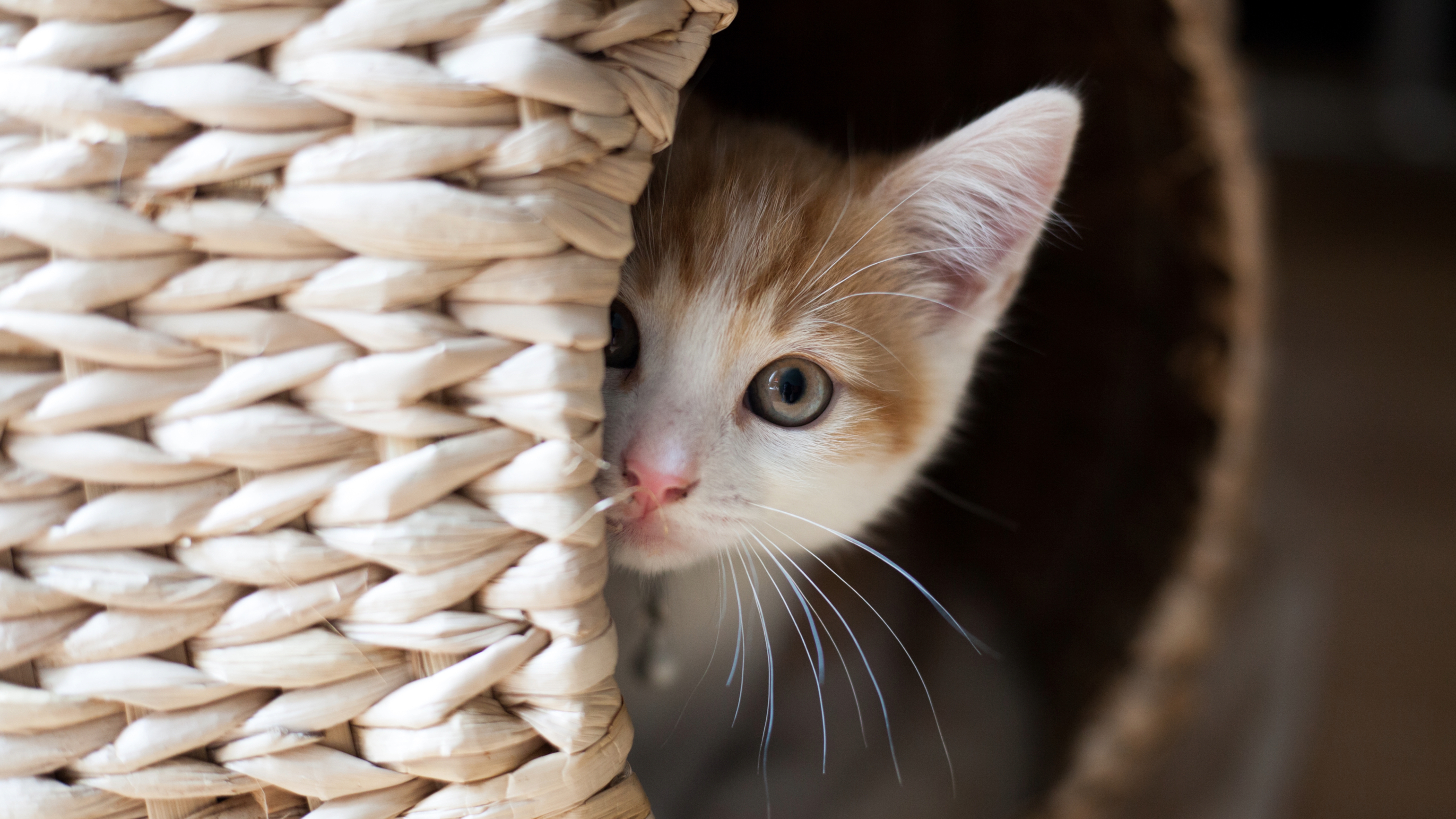
Most shy or anxious cats really benefit from places they can retreat to when they're feeling stressed. Investing in one of the best cat trees that's tall and features one or two condos they can hide away in is one option, but you can also create safe spaces around your home.
Under the bed is a popular choice among anxious cats, but you can also make a cozy spot behind your couch or other furniture, leave out empty cardboard boxes, clear out a space at the bottom of your closet, or erect some high cat-friendly shelving around your house.
This will give your cat plenty of places they can go to when they feel the need to hide away.
4. Keep interactions on their terms
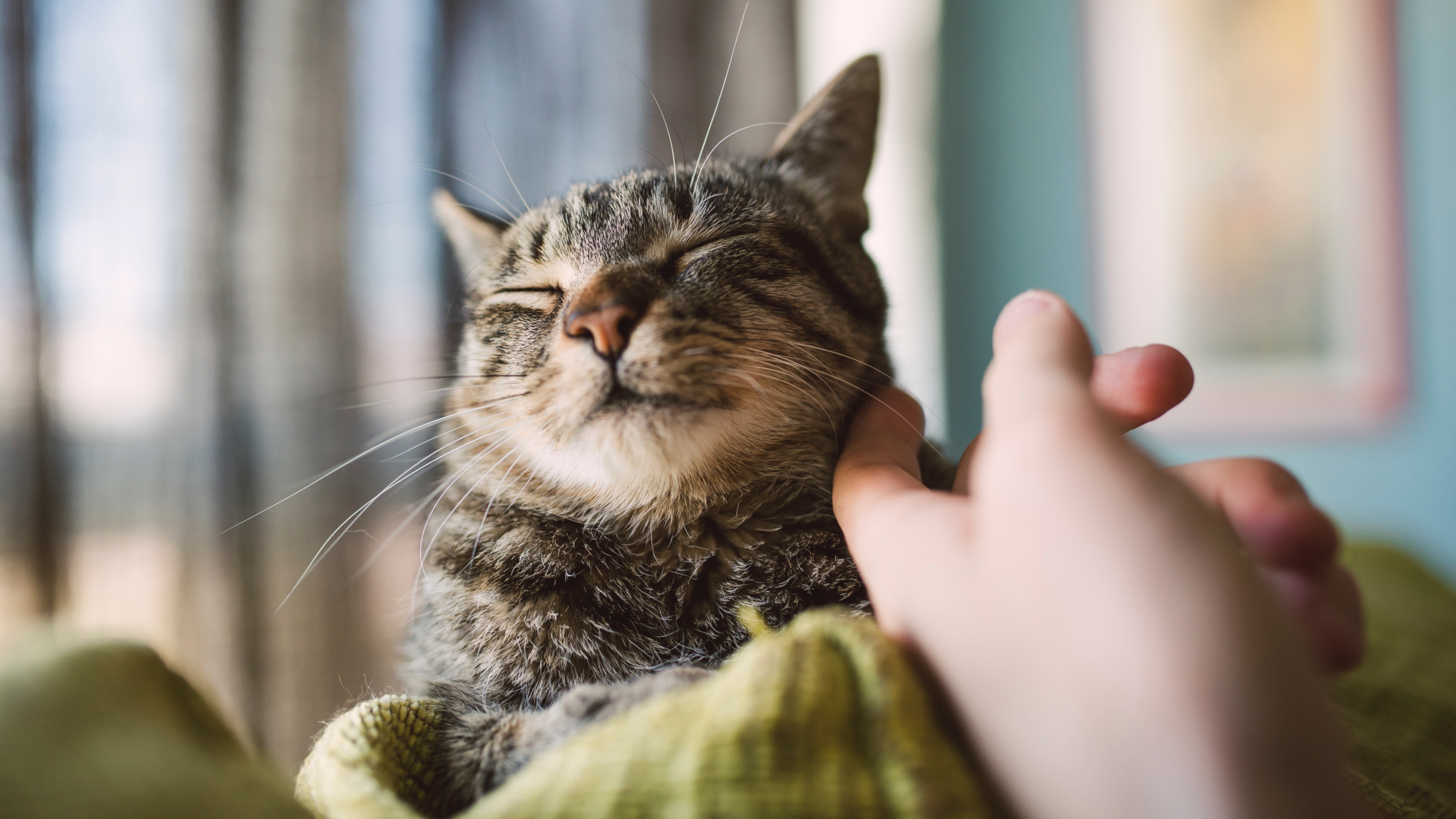
Looking for ways to be the best cat owner? Let your feline friend interact with you on their own terms. While a confident cat may not mind being picked up and held for a short while, shy or anxious cats typically do not like being restrained. If you want to pet your cat, do this while they're on the ground and never disturb them when they're hiding.
Let your cat approach you first and initiate an interaction. They may do this by rubbing up against you, pawing at you, meowing, or simply coming closer. You can try gently stroking them on their head or under their chin and seeing how they react – they'll be quick to tell you if they don't like it!
By giving your cat lots of choices, you help them to feel safer, more relaxed, and more in control of the relationship they have with you.
5. Manage their relationships with other pets
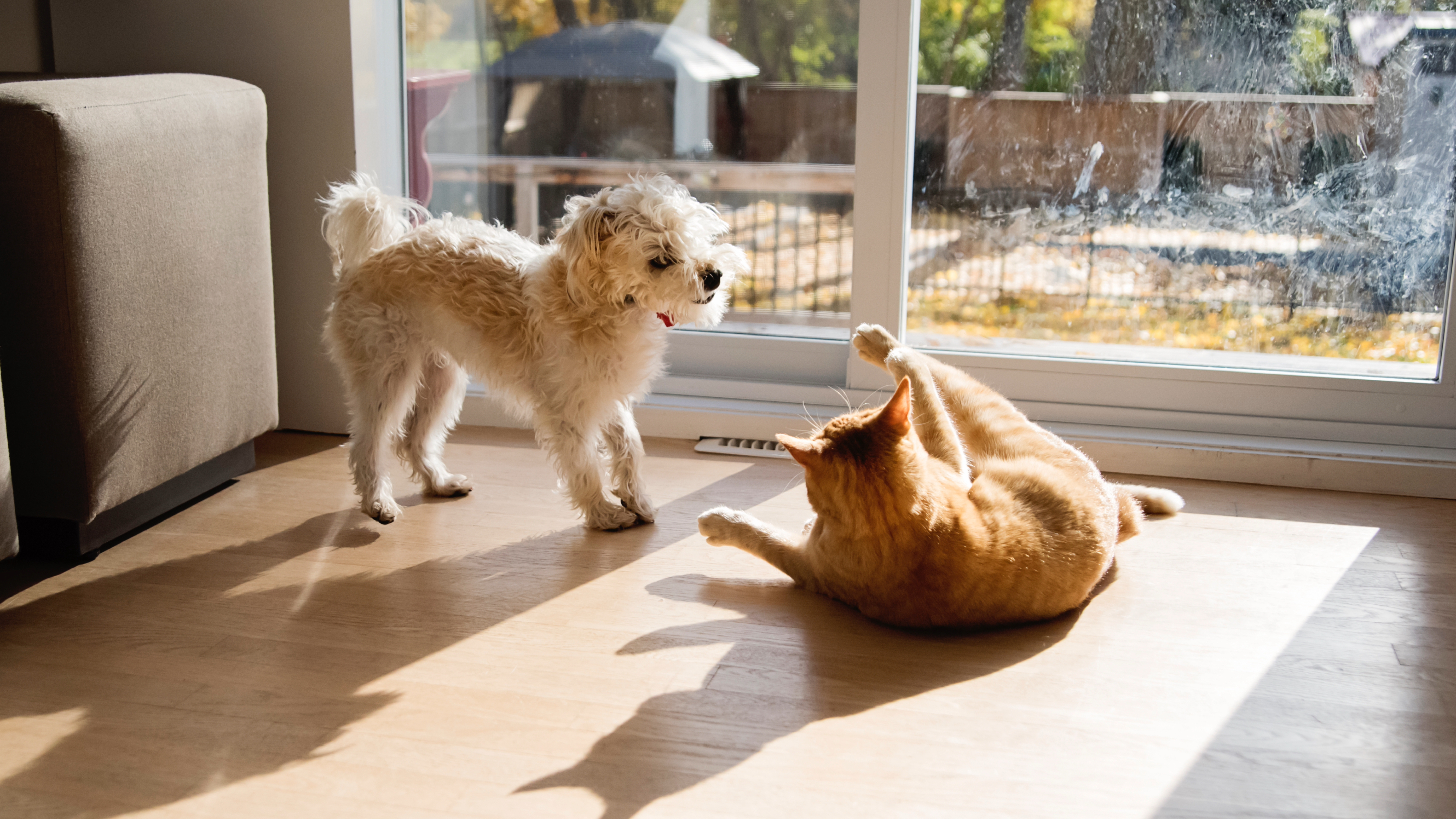
If you live in a multi-pet household, you'll want to manage the interactions between your anxious cat and your other animals. Remember that cats evolved to be solitary, so having other cats or dogs around can feel very threatening to them.
When introducing pets to each other, it's important to do this slowly and not rush things, as this will give your pets the best chance of getting along. It can also be wise if you're thinking of adopting another pet to try to choose a breed that would be a good fit for your cat – for example, a fairly relaxed and placid cat or dog would be much better than one who is high-energy.
6. Let guests know your cat is shy or anxious

Many outgoing and friendly cat breeds love welcoming guests into their home and will be only too happy to greet them at the door. But shy or anxious cats are likely to have a very different response. Instead of viewing a stranger as someone they just haven't made friends with yet, they're likely to feel worried or stressed about having an unknown person in their space.
Let your guests know before they enter your home that your feline friend isn't very confident and can find new people overwhelming. Ask them not to interact with your cat unless your cat specifically chooses to approach them, and make sure those cozy, safe spaces are all set up and ready for them should they feel the need to hide.
7. Try calming pheromones
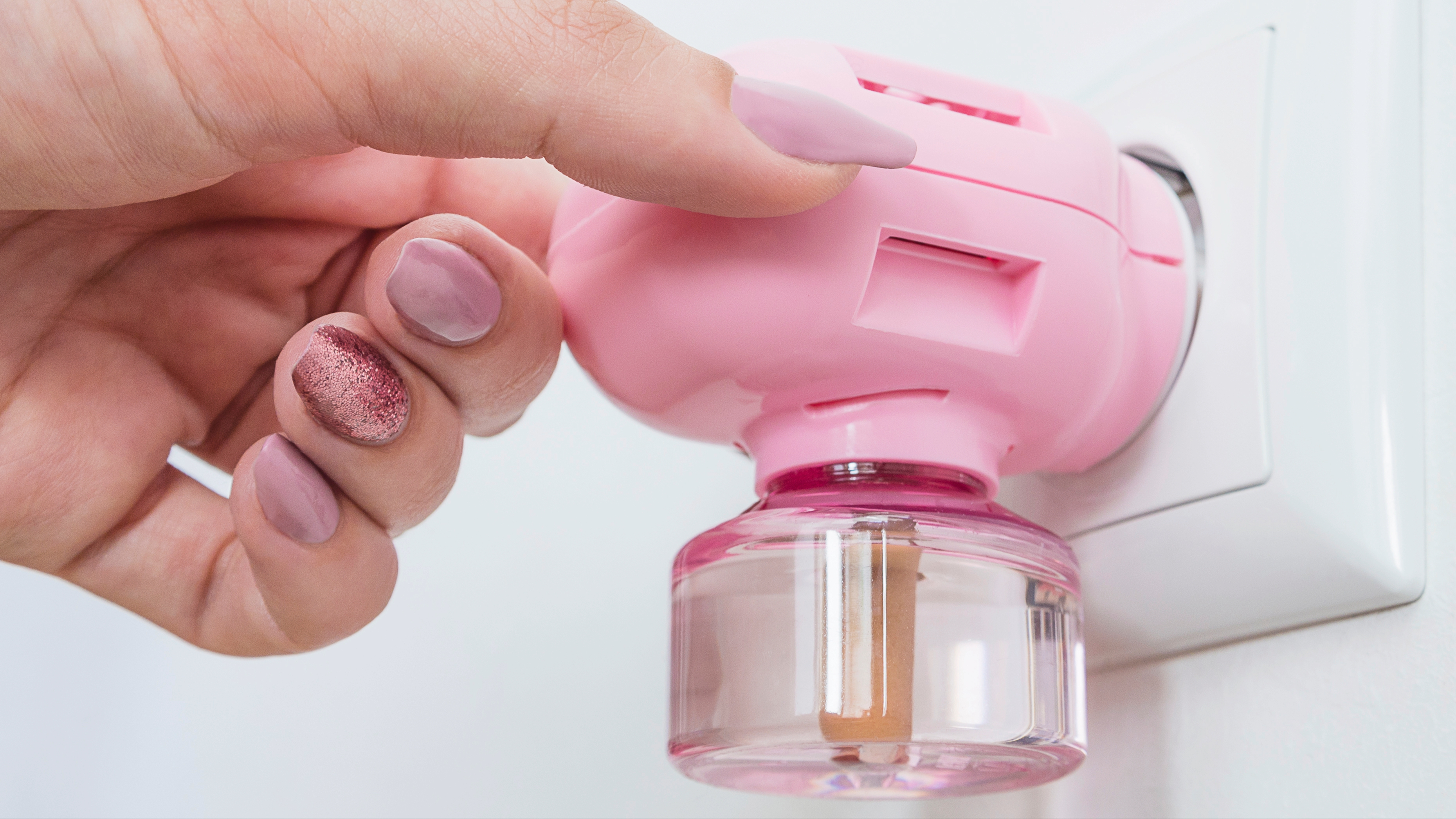
When it comes to how to calm a cat during periods of high anxiety, many experts recommend calming pheromones. These come in the form of plug-in diffusers, and they emit a synthetic version of a particular pheromone that cats produce, which may have a soothing effect on your feline friend.
While not effective on all cats, many owners report that using a pheromone diffuser has helped their cat feel more secure and at ease in their home.
8. Keep to a routine

Cats are creatures of habit and most value predictability in their day-to-day life, which is why sticking closely to a routine is so important. Try to keep things as stable as you can in your cat's life – that means feeding and playing with them at the same time each day, having designated rest areas, and being consistent in your interactions.
If you're worried about things like keeping meal times to a schedule, investing in one of the best automatic pet feeders can help take the hassle out of feeding your cat. All you need to do is program the feeder to release food at set times, and it will take care of the rest for you.
9. Be calm and gentle around them

Cats that are shy, anxious, or nervous do best with pet parents who are calm, patient, and consistent. Being gentle with your fur friend will help them feel safer and more at ease.
Speak in a quiet and soothing tone as most cats (even confident ones!) react much better to this than high-pitched, excited sounds, and keep your movements slow and relaxed rather than quick and sudden.
10. Make sure they're microchipped
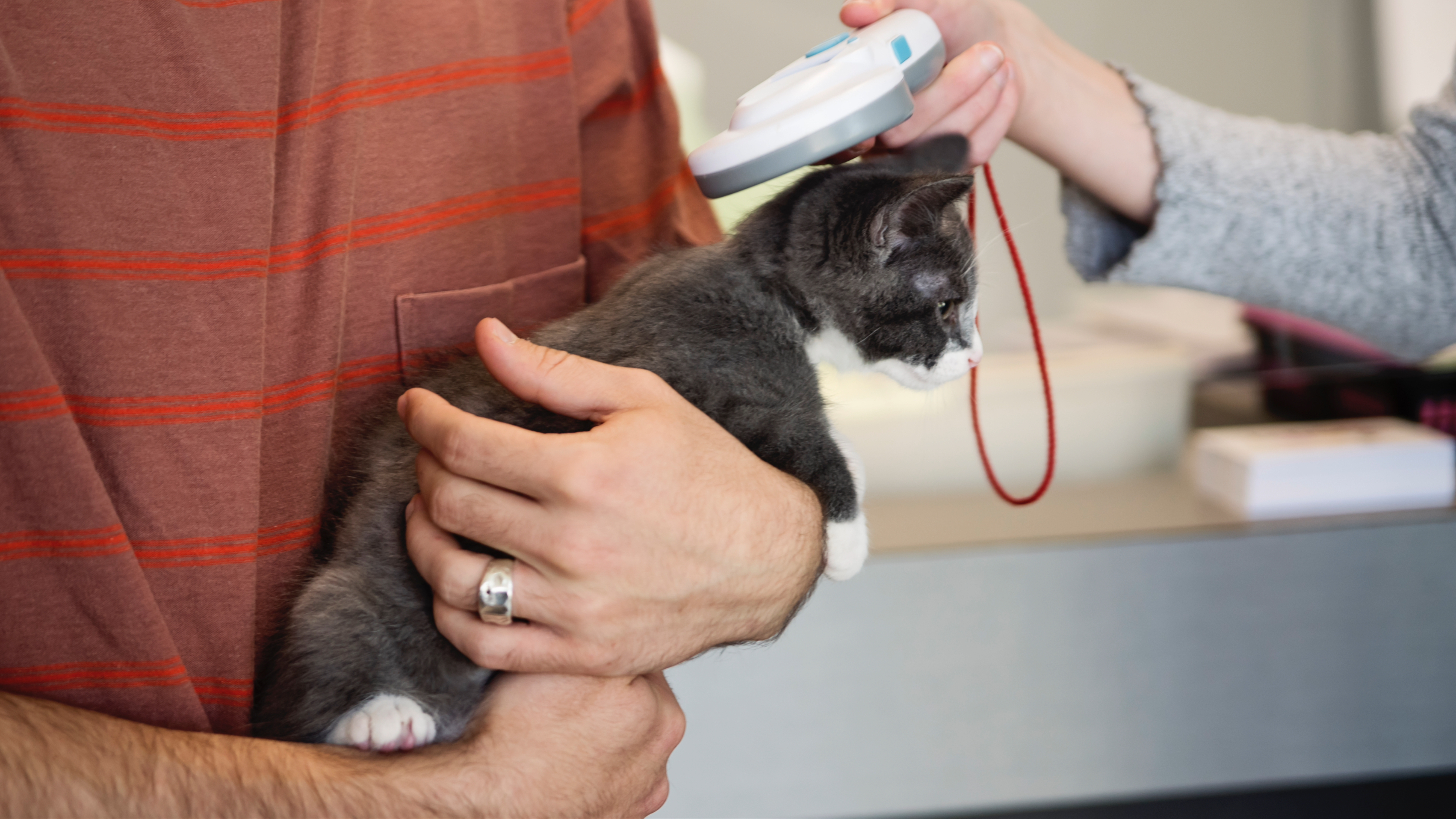
Shy or anxious cats are often more prone to panic than their more outgoing and relaxed brothers and sisters, so make sure your feline friend is microchipped and your details are up to date on the system.
This means that if your kitty does panic and run off if something scares or startles them, you'll have a much better chance of being reunited. And if your kitty likes to have access to the great outdoors, don't worry – fitting one of the best microchip cat flaps will mean they'll be able to come and go as they please.
11. Encourage interactive play

If your cat is shy or nervous, gently encouraging them to spend time playing with the best interactive cat toys can be a wonderful way to build their confidence and help them to come out of their shell. However, it's worth giving some thought to the kind of play sessions you invite your kitty to join you in.
Cats that are naturally nervous or easily overwhelmed often benefit from a slower pace to begin with. You might want to try gently moving a teaser wand around the floor or slowly rolling a ball past them and seeing if they engage. Respect their space and start gradually – you can always move to faster play sessions as they grow in confidence.
12. Use positive reinforcement

Whether you're training your cat or simply trying to get them to engage with you, always use positive reinforcement. When your feline friend does something you like (such as coming to sit near you or joining you in a play session), use plenty of verbal praise and a few cat treats, as this will encourage your kitty to repeat behaviors that you're wanting to see more of.
Positive reinforcement helps shy or nervous cats to associate situations they're uncertain about with good consequences, helping them to grow in confidence.
13. Focus on quality time

With shy or anxious cats, you want to be present but not smothering. Cats are much more introverted by nature than dogs are, and many will become stressed if they're not getting enough alone time. You also don't want to avoid your feline friend altogether, as this won't help them to become more confident.
So what's a confused pet parent to do? Focus on quality time rather than quantity. If your cat is hiding under the bed, you may not interact with them directly, but choosing to sit on your bed and read a book lets them know you're there. Make sure you're around enough that your cat gets used to your presence, but don't try to force interactions.
14. Understand feline body language

Cat body language may seem difficult to decipher at first, but it's not as complicated as you might think. Learning to understand the ways in which your kitty communicates can help to build trust and enable your cat to feel more comfortable and confident around you.
Some things to pay attention to are your cat's ears, tail, and the position of their body. If their ears are flattened or tucked back, that can indicate they're feeling anxious, fearful or that they may become aggressive. A tail pointing downward or tucked also signals fear or anxiety. In terms of their body, if they crouch or curl up in a ball, that's another sign that they're feeling stressed.
You'll know your cat is feeling at ease if their face and body are relaxed, and their tail is held high with a relaxed curve at the tip – sort of like a little question mark!
15. Respect their boundaries

One of the best ways to build confidence in your cat is to respect their boundaries. Always move at their pace, not yours, and whatever you do, don't undo all of your good work at the first sign that they might like to engage with you.
Some cats take a long time to trust people, so if they're starting to show signs of wanting to be pet, for example, start with the areas they're most likely to be comfortable with. You might give them a scratch under the chin or behind the ears or stroke their head.
If your cat gets to the point where they're rolling over and showing you their belly, resist the urge to rub it. A cat's stomach is the most vulnerable part of their body, and it's a huge sign of trust if they show it to you. It's also one of the most sensitive parts, and most cats don't enjoy being petted here. When they show it to you, it's not an invitation to be pet but simply a sign that they feel secure in your presence.
16. Try desensitizing them to scary sounds

Depending on what your cat's particular triggers are, you may find desensitization helpful. This is a process of gradually exposing your feline friend to things that scare them and rewarding calm behavior as a way of building confidence.
This can be a great tool when it comes to certain sounds that freak your cat out. For example, if fireworks or the vacuum cleaner have them running for cover, find a YouTube video of these sounds and play it at a very quiet volume. Reward any positive behavior. Gradually increase the volume until your cat is able to manage being around that particular noise.
Pay attention to your cat's body language whenever you're doing desensitization work and adjust your pace as needed. Keep sessions short to prevent your cat from becoming overwhelmed.
17. Slow blink at them

When it comes to cat communication, the slow blink has got to be one of the cutest ways they say I love you. Cats don't like direct, prolonged eye contact, as this sort of intense stare is something they'd only use if they were about to engage in a fight with another cat.
Because direct eye contact is threatening, try to avoid staring at your feline friend and instead give them a slow blink. Slowly close your eyes and then reopen them, briefly looking at your cat with a soft and gentle gaze. This is a great tool for building trust with cats who are naturally shy or anxious.
18. Make yourself look small

You may not think you're all that big, but to your cat, you're positively huge! Cats are small creatures, and we humans really tower over them, so it's no wonder they feel nervous and anxious around us sometimes.
The key to looking more approachable in your cat's eyes is to make yourself look as small as you can. When your cat's around, try to get down to their level sometimes. Sit on the floor or lie down near them – you'll be surprised how much more likely they are to come closer when you don't seem so big and threatening.
19. Invest in a scratching post
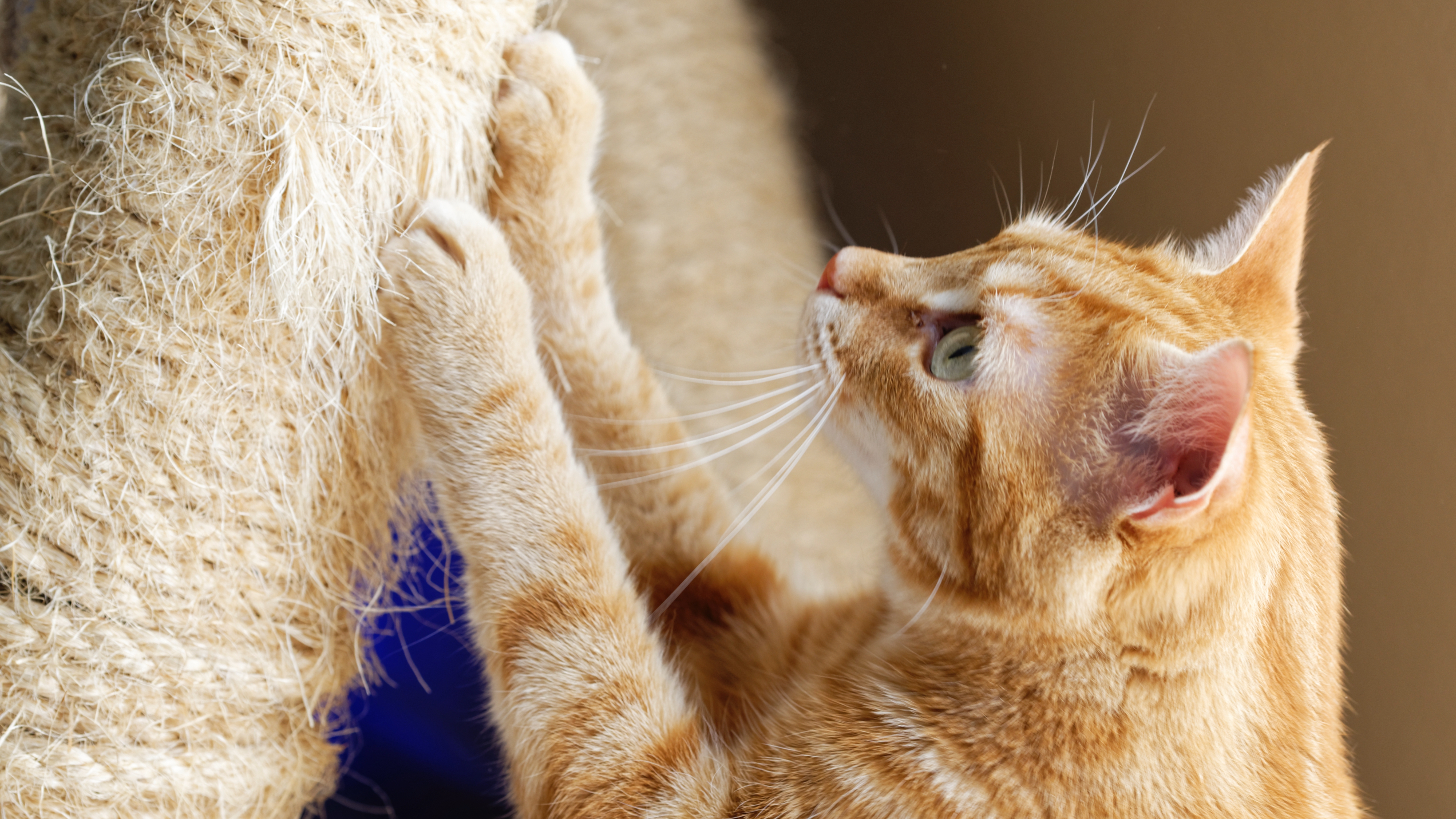
This may seem like an odd one. After all, what does scratching have to do with confidence? Well, as it turns out, quite a lot. Having one of the best cat scratching posts in your home won't just save your furniture, it also provides your feline friend with an opportunity to mark their territory.
Cats transfer their scent from their paws onto any objects that they scratch, so this can be a great way to help your cat feel more comfortable in your home.
Scratching serves another important function, too – it helps to relieve stress. Not to mention, it's great for keeping your cat's nails in tip-top condition, and it provides them with a lovely deep stretch as well.
20. Be patient
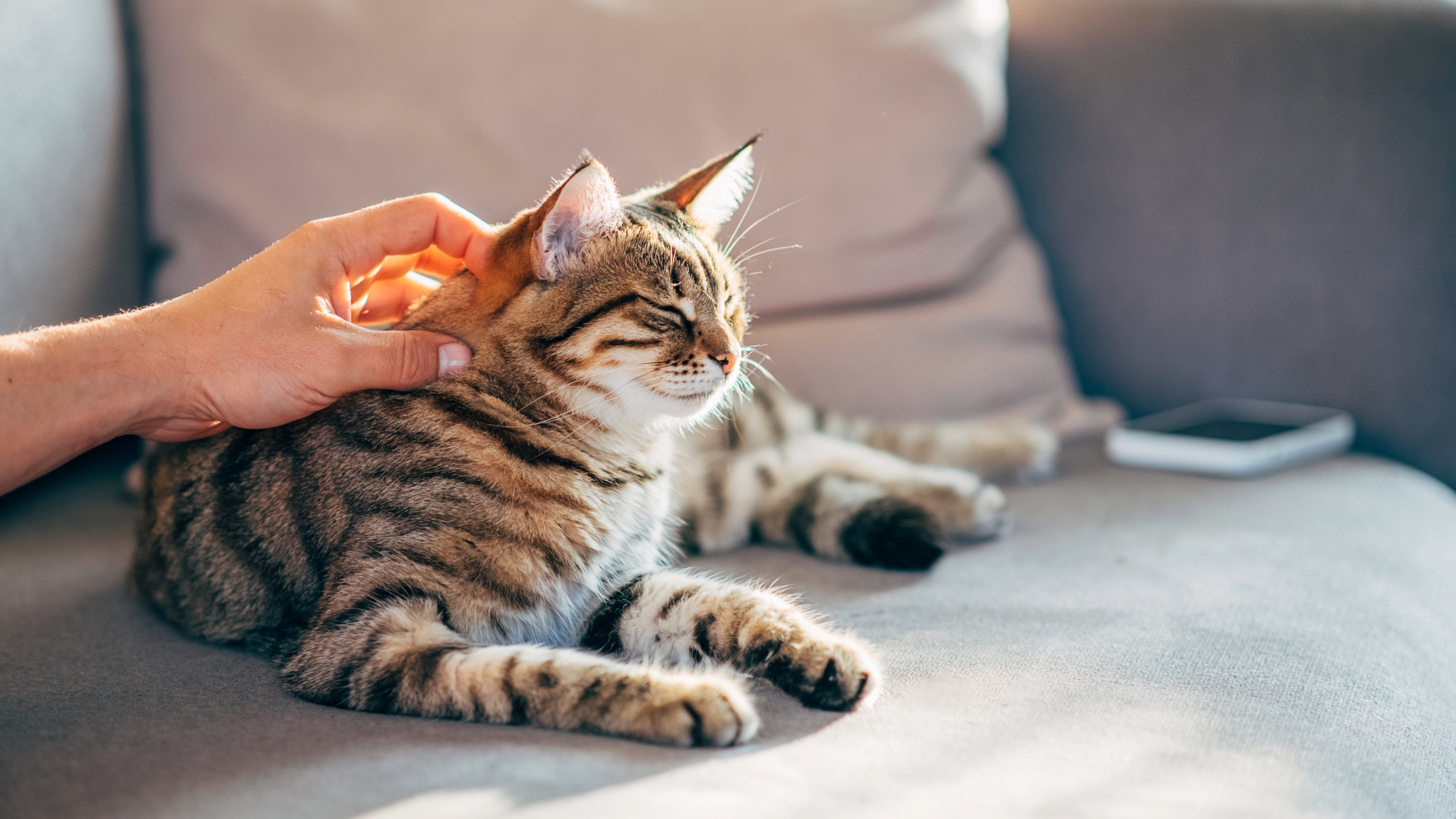
This one can be easy to overlook, but staying patient when working with shy or anxious cats is key to helping them grow in confidence. Some days it will feel like you've taken one step forward and two steps back, but trust that the more patient and consistent you are with your feline friend, the more they will learn to feel safe and secure around you.
Read next: 32 ways to destress your cat
Edited by Georgia Guerin and Alexis De Leaver.

Kathryn is a freelance writer who has been a member of the PetsRadar family since it launched in 2020. Highly experienced in her field, she's driven by a desire to provide pet parents with accurate, timely, and informative content that enables them to provide their fur friends with everything they need to thrive.
Kathryn works closely with vets and trainers to ensure all articles offer the most up-to-date information across a range of pet-related fields, from insights into health and behavior issues to tips on products and training.
When she’s not busy crafting the perfect sentence for her features, buying guides and news pieces, she can be found hanging out with her family (which includes one super sassy cat and a kitten), drinking copious amounts of Jasmine tea and reading all the books.
She has written for a range of publications, including Fit&Well, Top Ten Reviews, LiveScience, Goodto, and Product Hunt.
